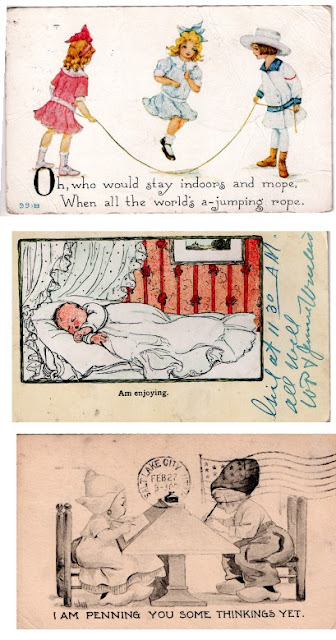Mt. Pleasant Cemetery
CANDACE BLANCHARD ROWE WILCOX
Candace Blanchard Rowe Wilcox was born July 24, 1851 at Camp Creek, Fremont Co.,
Iowa. She with two sisters and three brothers came to Utah with her parents Carratate Conderset
Rowe and Mary Napier Rowe in 1852 with Captain Jolley's Company. Her father was a member
of the Mormon Battalion and also served in the Walker War. They made their home in Payson
until 1860 when the family moved to Mt. Pleasant. Here she was married to Joseph Wilcox,
August 28,1867.
It will be remembered by many that she and her husband were of very jovial natures.
They saw the rays of sunlight rather than the lengthening shadows, and their home became sort of
a social center, many jolly gatherings filled with and life, and overflowing with mirth
were held there.
In 1877 when Mt. Pleasant was first divided into two wards, and the North Ward Relief
Society was organized Mrs. Carolina Madsen was made president with Mrs. Wilcox as secretary.
This office she fIlled faithfully and consciencely for nearly 14 years, or until the wards were
again united in 1890.
Her husband died December 30, 1888 at the age of 41 years, leaving her with eight
children: four sons and four daughters, the youngest a baby three months old. Some times it was
a great struggle to......... Never the less, she with the ambition she had inherited, faced her lot
with an attitude of faith and courage.
In 1898 she was elected city treasurer. This office she efficiently filled for two years.
May 1, 1900, her son David nearly 22 years old was killed in the great mine disaster at
Scofield. This was an awful blow, and caused her much sorrow and grief, but again, with the
attitude; "Thy will be done" she bravely fought the battle of earthly trials.
November 1900 when Sanpete Stake was divided into two stakes; North and South, Mt.
Pleasant was divided again into two wards. Mrs. Wilcox was made president of the North Ward
Relief Society, with Mrs. Botilda Nielsen and Mrs. Annie Peterson as councilors. This office she
filled in deed as well as name working harmoniously"with her co workers for 8 years, until
released by death, August 29, 1908 at the age of 57 years.
Aunt Candace, as we all loved to call.her, was noted for her honesty and her cheerfulness.
She was a ray of sunshine wherever she went. Whether there was sorrow or joy, she was always
welcome. She was especially sought for in the sickroom, as she was very gifted in the art of
caring for those in distress. At one time, it was proposed by the ward that she be sent to take
training as a professional nurse. The people all wanted it so, but her health at that time did not
warrant the strain.
She too, was of a very pleasing appearance. Her eyes were dark brown and her hair, as I
remember it, had turned a beautiful fluffY white. She was erect in form and graceful in courage,
and light in step.
She always had a smile and a cheerful greeting for all alike. As in her early married life,
her home was open to all and so in later years. Her home was a gathering place for the young of
the day. .,
The name "Aunt Candace" is graven deeply in the memory of many. At the time of her
death, she was surrounded by 3 sons, and 4 daughters. The sons have followed to the great
beyond. There are now four daughters, seventeen grandchildren, and two great grandchildren.
Like rolling wave on wave, the generations pour its tide into a common grave. One day a
babe - the next a man - the next unnamed - unknown; save for a more encrusted line and a
smoldering stone. The lives are swifter than the tale upon the fluttering page. They have just
come to learn the play and then pass off the stage.
Author unknown (1917) Original document on file at the Mt. Pleasant Relic Home.
Some words are so faint that they are unreadable.

+.JPG)






_Madsen_Carter_Sisters_B.jpg)



















.jpg)

























